Here at Royal Stafford, we are proud to retain skills and expertise in the local area. Our skilled craftsmen and women are the key to our high quality English earthenware.
Every piece of pottery made in our factory passes through the hands of many of our workers; it is a very labour intensive process.
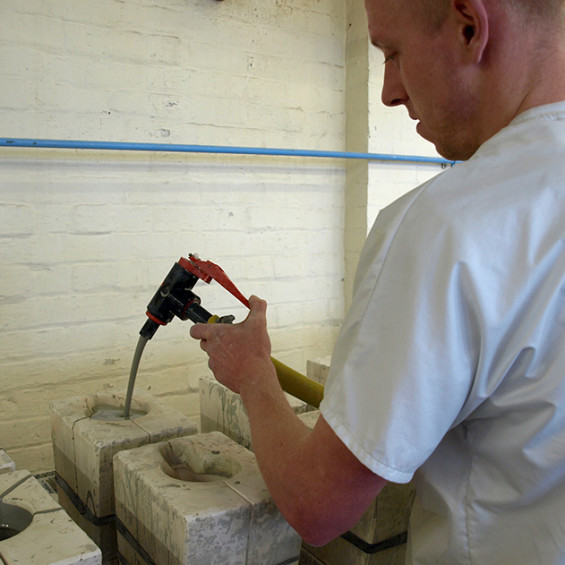
Casting
Some of our mugs are cast using the same techniques that our forefathers would recognise. Our clay comes from the South of England so we provide a wholly British product.
We can either use our special blend of clay by adding water to it, this is used for filling our moulds in the casting shop, or we can press the clay to a solid form which is then used in the production of plates.
If a piece is cast in a mould, it firstly needs to dry before it is turned out of the mould. Each piece of pottery is then trimmed and smoothed, this process takes away all of the seams that are left on the piece after parting the mould. A knife is used to remove the seams and it is then sponged over using clean water.
Machine-made plates and mugs
Some items can be made on a machine rather than cast. Flat items such as plates and bowls are made using a mould. A wad of clay is placed onto the mould, then the roller head (tool which forms the item) comes down to make the item by rolling the clay over the mould. These are then placed in a dryer and once dry, are sent for sponging where a machine smoothes the plate or sometimes this is done by hand.
Machine made mugs are made in a similar way. Clay automatically drops into the moulds and then a cup tool comes down into the mould and forms the shape of the cup. The cup is moved into the dryer and the sponging process follows to smooth off the tops. One of our skilled workers then wipes away any excess slip after sticking on the handle.
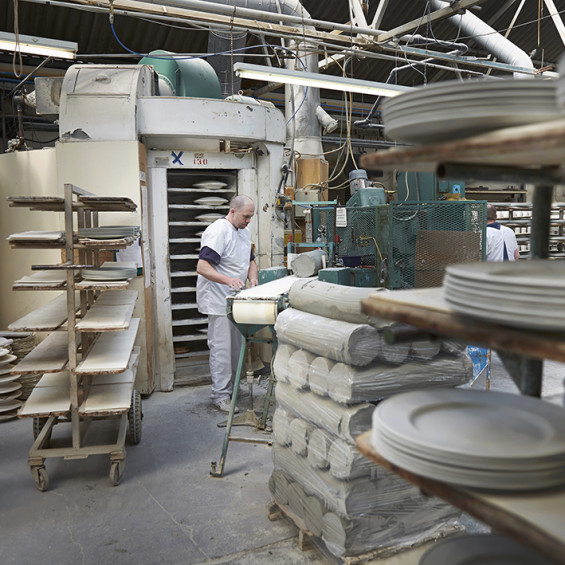
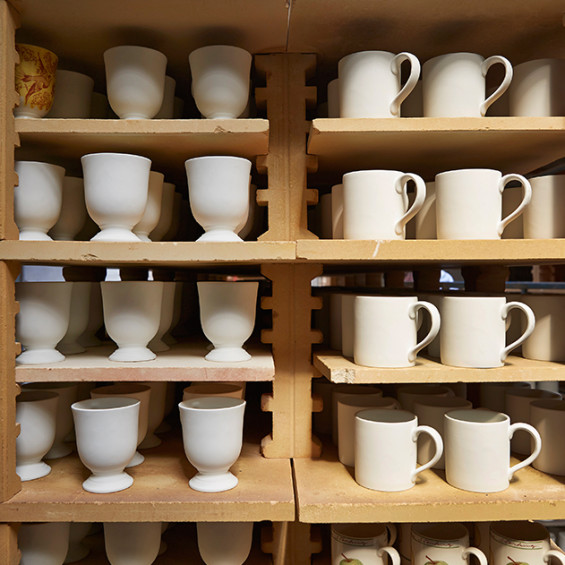
Biscuit Firing
All items are fired in their ‘biscuit’ form. Biscuit firing takes about 24 hours and the temparature reaches a maximum firing of 1130ºC
Glazing
The Glaze Layer gives each piece of our pottery its smooth and shiny surface. Glaze is a hard opaque glass, which is similar chemically to household window glass. The powdered materials we spray onto the ware stick together and to the ware surface due to the addition of a binder. This is glue similar to wallpaper paste which will burn out in the early stages of firing.
Some of our ware such as mugs and jugs are dipped into the glaze by hand and some such as plates are sprayed mechanically, supported through pre-heat on a spindle. After the glaze is applied mechanically, these items are placed into ‘cranks’ and are supported on three ‘pins’ which stacks the ware up but keeps it separate. The cups, mugs and cast items are foot wiped to remove excess glaze and all of the ware will be taken to be fired again in the Glost Kiln.
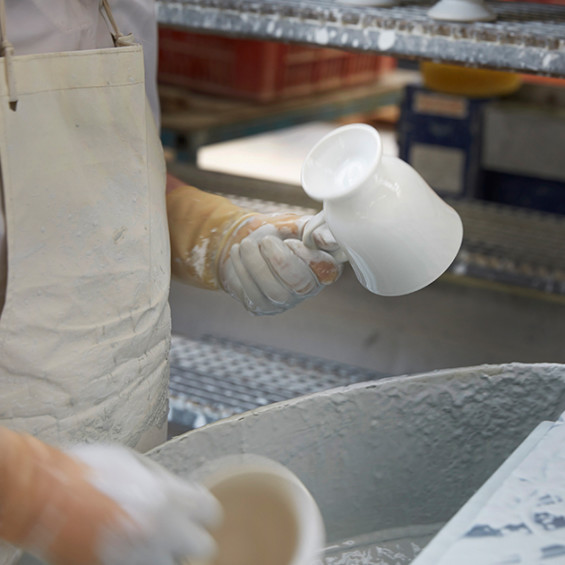
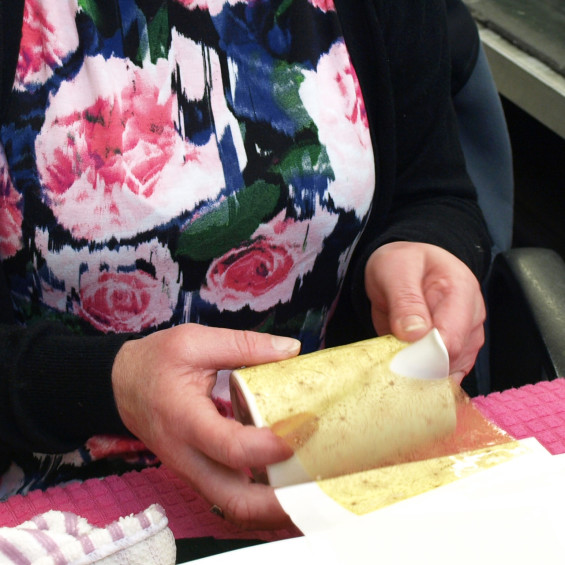
Decorating
Here at Royal Stafford, we decorate in a number of different ways depending on the type of ware and design.
Lithography is one of the processes we use to decorate items such as mugs, jugs and other cast items. Prints or ‘transfers’ are hand applied to the ware by our skilled workers, the item is then re-fired, for a third time, so that the item becomes dishwasher safe.
Printing
The vast majority of our flat items such as plates and bowls are decorated by machine using the underglaze printing process. This involves a silica bomb, an engraving and thermoplastic colours. Colour is spread onto the engraving; the silica bomb takes an imprint of the pattern and transfers it to the plate. We are able to print up to 4 colours on one machine in this way and to an exceptionally high standard.
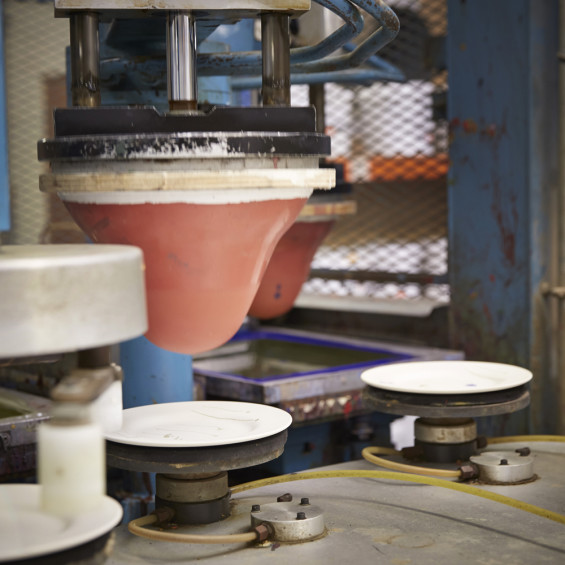
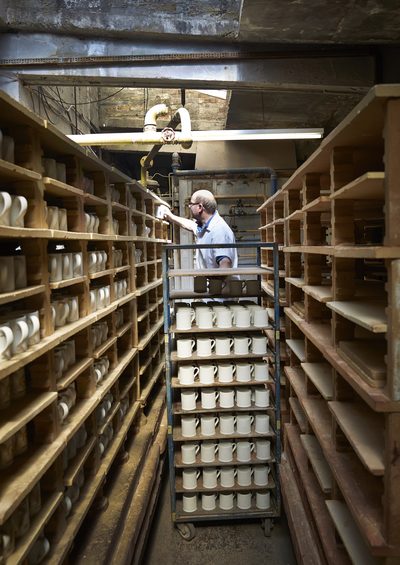
Firing
Once items have been decorated and glazed, they will need to be fired for the last time. For decorated mugs, this is the third firing. What goes into the kiln looks like a layer of icing on the ware. As the kiln heats up, the fluxes melt and dissolve the additives in the glaze which fuses everything together into a thin layer which sticks to the core. The Glost kiln fires up to 1030 ºC.
Once firing is complete and the ware cool, it is unloaded and fed into a ginneting machine to remove the refractory pin marks left on the plate at the points where it is supported by the crank. The three pin marks will still be visible on the back of the plates; this is inherent in the production of tableware and should not be regarded as a fault.
Quality, Packing and Despatch
All of our ware has a final inspection before it is then packed and despatched to our customers around the world and may just end up on your kitchen table!
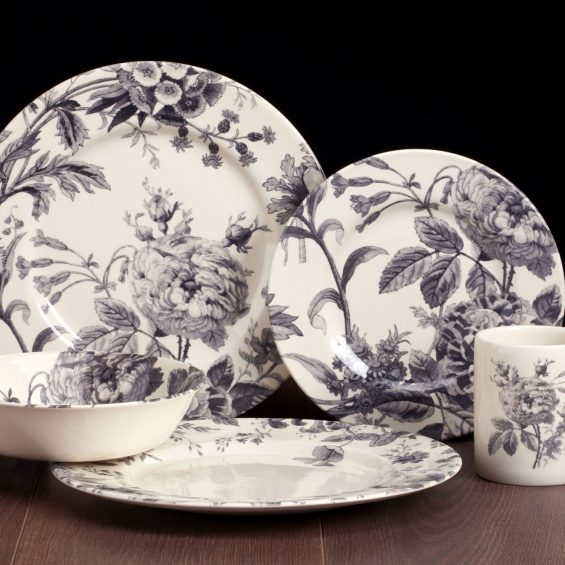
Photos by John Muggenborg.
